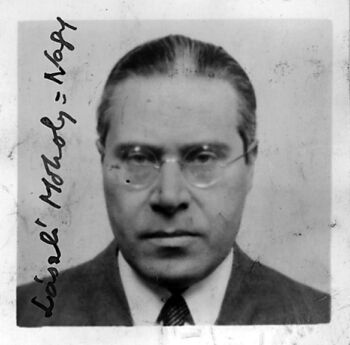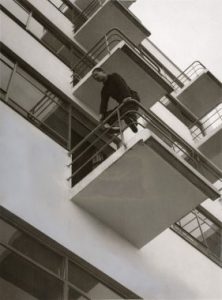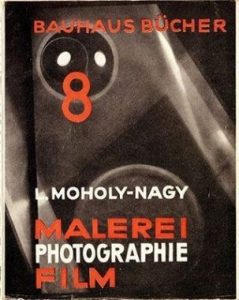László Moholy-Nagy is one of the greatest influencers on post-war art education and one of the protagonists of the Bauhaus era.

image source: https://en.wikipedia.org/wiki/L%C3%A1szl%C3%B3_Moholy-Nagy#/media/File:Laszlo_Moholy-Nagy_-_photography_from_NARA_-_281845.jpg
His pioneering work in painting, drawing, photography, typography, collage, printmaking, sculpture, metalworking, film, theatre, and writing made him famous for being a relentlessly experimental figure throughout the history of the Bauhaus school.
About His Life
Moholy-Nagy was born on 20 July 1895 in Bácsborsód, Hungary to a Jewish family. He left for Budapest, in 1913, to study law only to enlist into the Austro-Hungarian Army. There, he experienced the horrors of war, but it was during this time that he discovered a passion for drawing and painting.
After his discharge from the military, he attended a private art school and then moved to Berlin, where he met Walter Gropius. In 1923, he taught at the Staatliches Bauhaus, located in Dessau. There, he took over the school’s preliminary course and gave it more of a practical and technological approach. He left the Bauhaus and Marianne Brandt took over his role in 1928.

image source: https://bauhaus-movement.tumblr.com/post/165190724624/l%C3%A1szl%C3%B3-moholy-nagy-photo-walter-gropius
Fleeing from Nazi Germany, he moved to Chicago in 1937. There, he opened the first American school based on the Bauhaus principals, later known as the Institute of Design in Chicago. Additionally, he continued to work until he died of leukemia on 24 November 1946.
Identity and Key Concepts
Moholy-Nagy’s belief in the potential of new technologies was shaped by Dadaism and Constructivism, which both influenced 20th-century trends. He developed art education theories focused on developing students’ natural gifts. He believed “Everybody is talented.”

He coined the term Neues Sehen (New Vision), which was a whole new way of seeing the outside world provided by the advent of the camera. Further, it sparked Moholy-Nagy’s belief that artists had to learn to see again by modernizing their understanding of vision through experimentation.
Moholy-Nagy’s interest in qualities of space, time, and light endured throughout his career and transcended the very different media he employed. He was also the first interwar artist to suggest the use of scientific equipment in the making of art.
His Major Works
Malerei Photographie Film (Painting Photography and Film – 1925): The Eighth volume in the series, written by Moholy-Nagy, is a showcase work of his pioneering achievements in typography and photographic editing.

image source: https://en.wikipedia.org/wiki/L%C3%A1szl%C3%B3_Moholy-Nagy#/media/File:L%C3%A1szl%C3%B3_Moholy-Nagy_Malerei_Umschlag_1925.jpg
Photogram (1926): Moholy-Nagy was captivated by light throughout his career: especially in this work, light is the very means of visual composition or as he called it “the medium of plastic expression.”

image source: https://search.creativecommons.org/photos/45a6bba2-dd40-4b9e-a3c0-b7776f72350d by Cea.
Light Prop for an Electric Stage (Light Space Modulator – 1930): The large circular base supports various moving components. They sum up Moholy-Nagy’s Utopian vision for a total work of art (Gesamtkunstwerk). Additionally, this vision transcended all media and reflected the complexity of a living, biological form.

image source: https://commons.wikimedia.org/wiki/File:CH_XIV_(1939)_-_L%C3%A1szio_Moholi_Nagy_(1895_-_1946)_(24973282627).jpg
Info sources: https://en.wikipedia.org/wiki/L%C3%A1szl%C3%B3_Moholy-Nagy https://moholy-nagy.org/art-database-gallery/
